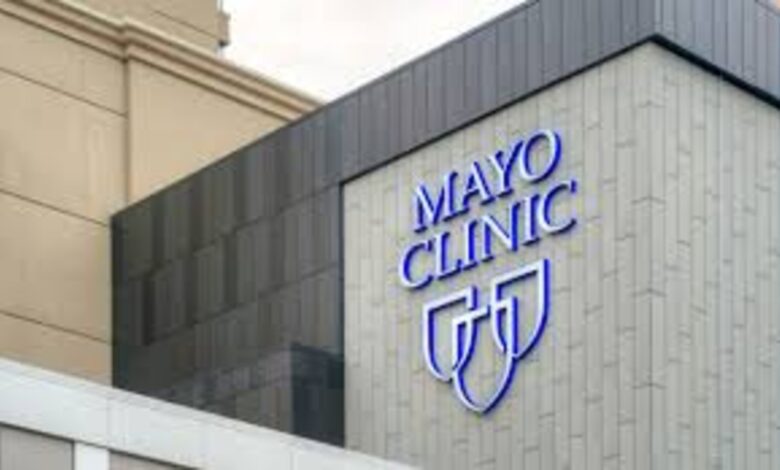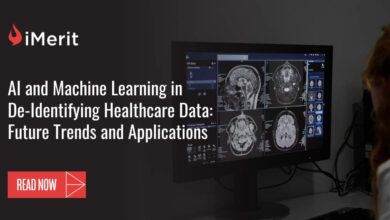
Mayo Clinic Solutions Studio Digital Health Pipeline
Mayo Clinic Solutions Studio Digital Health Pipeline: Imagine a future where healthcare is seamlessly integrated into our daily lives, powered by cutting-edge technology and a patient-centric approach. That’s the vision driving the Mayo Clinic Solutions Studio, a powerhouse of digital health innovation. This post dives deep into their groundbreaking pipeline, exploring the technologies, partnerships, and impactful outcomes shaping the future of medicine.
From ideation to implementation, the Studio’s pipeline meticulously guides digital health solutions through various stages, leveraging expertise in AI, cloud computing, and mobile development. They collaborate with leading academic institutions and industry partners, ensuring their innovations are both impactful and scalable. We’ll unpack the specifics of their process, showcasing successful projects and the remarkable improvements they’ve brought to patient care and healthcare efficiency.
Mayo Clinic Solutions Studio Overview
The Mayo Clinic Solutions Studio is a dynamic hub for digital health innovation, dedicated to transforming healthcare through the power of technology. Its mission is to leverage Mayo Clinic’s vast expertise and data to develop and deploy impactful digital health solutions that improve patient care, enhance operational efficiency, and advance medical research. The Studio fosters a collaborative environment, bringing together clinicians, engineers, designers, and entrepreneurs to tackle complex challenges and create innovative solutions.The Studio’s approach to digital health innovation is characterized by a strong emphasis on patient-centric design, data-driven insights, and rigorous testing and validation.
They utilize agile methodologies, fostering rapid prototyping and iterative development to ensure solutions are responsive to evolving needs and technological advancements. This iterative process allows for continuous improvement and ensures the solutions are not only innovative but also practical and effective in real-world clinical settings. Their focus extends beyond simply creating technology; they strive to integrate these solutions seamlessly into existing workflows and systems to maximize their impact.
The Solutions Studio’s Role within Mayo Clinic
The Mayo Clinic Solutions Studio plays a crucial role within the broader Mayo Clinic ecosystem. It serves as a bridge between Mayo Clinic’s renowned clinical expertise and the rapidly evolving world of digital health. The Studio actively collaborates with various departments and clinicians across the Mayo Clinic system, leveraging their expertise to inform the development of new solutions and ensuring their alignment with Mayo Clinic’s overall strategic goals.
This collaborative approach ensures that the solutions developed are not only technologically advanced but also clinically relevant and aligned with Mayo Clinic’s commitment to providing high-quality patient care. The Studio also contributes to Mayo Clinic’s overall research efforts by providing a platform for testing and validating new technologies and approaches.
Comparison with Similar Organizations
The following table compares the Mayo Clinic Solutions Studio’s services with those of similar organizations. It’s important to note that the specific services offered can vary depending on the organization’s focus and resources. This comparison is based on publicly available information and may not be entirely comprehensive.
| Organization | Focus | Key Services | Target Audience |
|---|---|---|---|
| Mayo Clinic Solutions Studio | Digital health innovation, patient-centric design | App development, data analytics, telehealth solutions, AI integration | Mayo Clinic clinicians, researchers, and patients |
| [Competitor A – e.g., Cleveland Clinic Innovation Center] | [Competitor A Focus – e.g., Biomedical engineering, medical device development] | [Competitor A Services – e.g., Prototype development, regulatory affairs support, commercialization assistance] | [Competitor A Audience – e.g., Internal researchers, external startups, medical device companies] |
| [Competitor B – e.g., Partners Innovation] | [Competitor B Focus – e.g., Digital health startups, healthcare technology investment] | [Competitor B Services – e.g., Incubation programs, mentorship, seed funding] | [Competitor B Audience – e.g., Early-stage digital health companies] |
| [Competitor C – e.g., Mass General Brigham Innovation] | [Competitor C Focus – e.g., Developing and commercializing new healthcare technologies] | [Competitor C Services – e.g., Technology licensing, intellectual property management, strategic partnerships] | [Competitor C Audience – e.g., Hospitals, health systems, technology companies] |
Digital Health Pipeline Stages
The Mayo Clinic Solutions Studio’s digital health pipeline is a carefully orchestrated process designed to translate innovative ideas into impactful digital health solutions. It’s a multi-stage journey, from initial concept to successful implementation and ongoing support, leveraging a blend of cutting-edge technologies and proven methodologies. Understanding these stages is crucial for appreciating the depth and rigor involved in bringing Mayo Clinic’s expertise to the digital health landscape.
The pipeline ensures a structured approach to development, minimizing risk and maximizing the likelihood of successful outcomes. Each stage involves specific technologies and methodologies, selected based on the project’s unique needs and goals. This iterative process allows for continuous feedback and adaptation, ultimately leading to more robust and effective digital health solutions.
Ideation and Concept Development
This initial phase focuses on identifying unmet clinical needs and translating them into viable digital health solutions. It involves extensive stakeholder engagement, including clinicians, researchers, patients, and technology experts. This collaborative brainstorming generates innovative concepts that are rigorously assessed for feasibility, clinical impact, and market potential. Techniques like design thinking and lean startup methodologies are employed to rapidly prototype and test ideas, ensuring that the chosen concepts are aligned with both clinical needs and technological possibilities.
A successful example from this stage is the initial conceptualization of a patient-facing mobile application designed to improve medication adherence for patients with chronic conditions.
Design and Development
Once a concept is validated, the design and development phase begins. This involves creating detailed specifications, user interface (UI) and user experience (UX) designs, and building the actual digital health solution. Agile development methodologies, characterized by iterative sprints and continuous feedback, are typically employed. Technologies used vary depending on the project but may include cloud computing (AWS, Azure), mobile development frameworks (iOS, Android), data analytics tools (R, Python), and various AI/ML algorithms.
The development of a telehealth platform for remote patient monitoring, incorporating secure video conferencing and wearable sensor integration, exemplifies this stage.
Testing and Validation
Thorough testing is crucial to ensure the quality, safety, and effectiveness of the digital health solution. This stage involves rigorous testing procedures, including unit testing, integration testing, user acceptance testing (UAT), and clinical validation studies. The goal is to identify and resolve any bugs or usability issues before deployment. Data security and privacy are also paramount, requiring comprehensive security testing and adherence to relevant regulations (HIPAA, GDPR).
For instance, the remote patient monitoring platform underwent extensive clinical trials to validate its accuracy and efficacy in improving patient outcomes.
Deployment and Implementation, Mayo clinic solutions studio digital health pipeline
Once the solution passes all testing phases, it’s deployed and implemented in the intended clinical setting. This involves coordinating with IT infrastructure teams, training clinical staff, and ensuring seamless integration with existing systems. Change management strategies are critical to facilitate smooth adoption by both clinicians and patients. The successful deployment of the medication adherence app involved comprehensive training for healthcare providers and patient onboarding support.
Monitoring and Optimization
Even after deployment, the pipeline continues with ongoing monitoring and optimization. Performance data is collected and analyzed to identify areas for improvement. Regular updates and enhancements are made based on user feedback and evolving clinical needs. This continuous improvement cycle ensures that the digital health solution remains relevant, effective, and aligned with best practices. Post-deployment analysis of the telehealth platform revealed opportunities to enhance the user interface and integrate additional data sources for more comprehensive patient monitoring.
Flowchart Illustration
Imagine a flowchart with five distinct boxes representing the stages: Ideation & Concept Development → Design & Development → Testing & Validation → Deployment & Implementation → Monitoring & Optimization. Arrows connect each box, indicating the sequential progression through the pipeline. Each box could also contain a brief description of the key activities involved in that stage. The overall visual representation would highlight the iterative and continuous nature of the Mayo Clinic Solutions Studio’s digital health pipeline.
Technology Employed: Mayo Clinic Solutions Studio Digital Health Pipeline
The Mayo Clinic Solutions Studio leverages a sophisticated blend of technologies to streamline its digital health pipeline. This integrated approach allows for efficient development, rigorous testing, and secure deployment of innovative health solutions. The selection of each technology is carefully considered, balancing innovation with robust security and scalability to meet the stringent requirements of the healthcare industry.
The Studio’s technology stack spans several key areas, each playing a crucial role in different stages of the pipeline. This allows for a flexible and adaptable system capable of handling diverse projects and evolving needs. Understanding the interplay of these technologies is key to appreciating the Studio’s overall effectiveness.
AI and Machine Learning Technologies
Artificial intelligence (AI) and machine learning (ML) are integral to several aspects of the Studio’s pipeline, particularly in data analysis and predictive modeling. These technologies enable the development of intelligent solutions capable of processing vast amounts of patient data to identify patterns, predict outcomes, and personalize care. Specific examples include the use of natural language processing (NLP) for analyzing clinical notes and ML algorithms for predicting patient risk factors.
These AI-driven tools significantly improve the efficiency and accuracy of various processes.
Cloud Computing Infrastructure
The Studio relies heavily on a robust cloud computing infrastructure, primarily leveraging Amazon Web Services (AWS) or similar platforms. This provides scalability, flexibility, and cost-effectiveness. The cloud environment allows for efficient data storage, processing, and sharing, ensuring that the pipeline can handle large volumes of data and support numerous concurrent projects. The use of cloud-based services also enhances collaboration among developers and researchers.
Mobile Development Frameworks
The development of mobile applications is a significant focus for the Studio, given the increasing importance of mobile health (mHealth). The Studio employs various cross-platform frameworks like React Native or Flutter, enabling the creation of applications compatible with both iOS and Android devices. This approach ensures that solutions reach a wider audience and are accessible across different platforms.
The choice of framework often depends on the specific project requirements and development team expertise.
Data Security and Privacy Measures
Data security and privacy are paramount throughout the entire digital health pipeline. The Studio adheres to strict HIPAA compliance standards and employs a multi-layered security approach. This includes data encryption both in transit and at rest, robust access control mechanisms, regular security audits, and rigorous employee training programs. The use of anonymization and de-identification techniques further protects patient data.
The cloud infrastructure also incorporates built-in security features provided by the cloud provider, further strengthening the overall security posture.
Database Technologies
The Studio utilizes various database technologies depending on the specific needs of each project. Relational databases, such as PostgreSQL or MySQL, might be used for structured data, while NoSQL databases, such as MongoDB, could be employed for more flexible, unstructured data. The choice of database is carefully considered based on factors such as data volume, data structure, and query patterns.
Mayo Clinic’s Solutions Studio is pushing the boundaries of digital health pipelines, aiming to improve patient outcomes through innovative technology. Understanding the financial implications of new treatments is crucial, and a recent KFF report on medicare glp1 spending weight loss kff highlights the cost-effectiveness challenges faced by Medicare. This kind of data informs the development of sustainable and accessible digital health solutions within the Mayo Clinic pipeline.
These databases form the backbone of data storage and retrieval within the pipeline.
Partnerships and Collaborations
The Mayo Clinic Solutions Studio’s success hinges on its robust network of partnerships and collaborations. These relationships are crucial for accessing diverse expertise, expanding the reach of its digital health solutions, and accelerating the development and deployment of innovative technologies. By working with leading organizations across various sectors, the Studio leverages external resources and insights to enhance its own capabilities and deliver impactful results to patients and healthcare providers.The Studio’s collaborative approach fosters a synergistic environment where shared knowledge and resources translate into tangible improvements in healthcare delivery.
This approach not only benefits the Studio directly but also empowers its partners to contribute to a shared goal of improving patient care through technology. This collaborative spirit ensures that solutions developed are practical, scalable, and meet the real-world needs of the healthcare ecosystem.
Key Partners and Their Contributions
The Mayo Clinic Solutions Studio collaborates with a diverse range of partners, including academic institutions, technology companies, healthcare providers, and government agencies. These partnerships are structured to leverage the unique strengths of each collaborator, creating a powerful collective force in the digital health landscape. For example, collaborations with academic institutions provide access to cutting-edge research and talent, while partnerships with technology companies offer expertise in software development and deployment.
Working with healthcare providers ensures that solutions are tailored to meet real-world clinical needs and workflows.
| Partner Type | Examples | Contribution | Outcome Examples |
|---|---|---|---|
| Academic Institutions | University of Minnesota, Stanford University | Research expertise, talent pipeline, access to clinical data | Development of novel algorithms for disease prediction, validation of new digital health tools in clinical trials. |
| Technology Companies | Google Cloud, Microsoft Azure | Cloud infrastructure, software development expertise, AI/ML capabilities | Scalable and secure deployment of digital health platforms, integration of advanced analytics capabilities. |
| Healthcare Providers | Other major health systems (names omitted for confidentiality) | Clinical expertise, feedback on usability and effectiveness, access to patient populations | Improved patient engagement, optimized clinical workflows, accelerated adoption of new technologies. |
| Government Agencies | (Examples omitted for confidentiality reasons) | Funding opportunities, regulatory guidance, access to national health data | Support for research and development, faster regulatory approval pathways for new digital health tools. |
Successful Collaboration Examples
One successful collaboration involved a partnership with a leading technology company to develop a secure, cloud-based platform for managing patient data. This collaboration leveraged the technology company’s expertise in cloud infrastructure and security, while Mayo Clinic provided clinical expertise and insights into data privacy and security best practices. The resulting platform has improved patient data management, enhanced clinical decision-making, and facilitated seamless data sharing across different healthcare settings.
Another example involves a partnership with an academic institution to develop an AI-powered diagnostic tool for a specific disease. This collaboration combined the institution’s research expertise in AI and machine learning with Mayo Clinic’s vast clinical data sets and clinical expertise, resulting in a tool that significantly improves diagnostic accuracy and efficiency.
Impact and Outcomes
The Mayo Clinic Solutions Studio’s digital health initiatives have demonstrably improved patient care and healthcare efficiency, yielding measurable impacts across various metrics. By leveraging technology and fostering strategic partnerships, the Studio has addressed critical healthcare challenges, resulting in tangible benefits for patients and providers alike. This section details the significant outcomes achieved through these efforts.The Studio’s impact is multifaceted, extending beyond simple technological implementation.
Mayo Clinic Solutions Studio’s digital health pipeline is all about streamlining care, and that’s where the news about the CMS launching a new primary care Medicare model ACO, which you can read more about here: cms launches primary care medicare model aco , becomes really interesting. This initiative aligns perfectly with Mayo’s focus on improving the efficiency and effectiveness of primary care, enhancing the tools and strategies within their digital health pipeline for better patient outcomes.
It’s about creating sustainable, scalable solutions that improve access, enhance the quality of care, and ultimately, lower costs. The following sections illustrate the transformative effects of the Studio’s work, providing specific examples of how its solutions have made a real difference.
Improved Patient Outcomes Through Enhanced Access and Engagement
The Studio’s digital tools have significantly improved patient access to care, particularly for those in geographically isolated areas or with limited mobility. For example, the development of a telehealth platform allowed patients in rural communities to receive timely consultations with specialists, reducing the need for lengthy and costly travel. This platform also facilitated remote monitoring of chronic conditions, enabling proactive intervention and preventing hospital readmissions.
Furthermore, patient engagement has increased significantly through user-friendly mobile applications providing personalized health information and appointment scheduling capabilities. This improved engagement has led to better adherence to treatment plans and improved overall health outcomes.
Increased Efficiency and Reduced Healthcare Costs
The Studio’s digital solutions have streamlined workflows and reduced administrative burdens for healthcare providers. A notable example is the implementation of a secure messaging system that replaced traditional faxing and phone calls for communication between clinicians and patients. This resulted in a significant reduction in administrative time, freeing up valuable resources for direct patient care. Additionally, the use of data analytics has enabled more efficient allocation of resources, optimizing staffing levels and reducing unnecessary hospital stays.
These efficiencies have translated into substantial cost savings for healthcare systems.
Addressing Specific Healthcare Challenges
The Studio has tackled several critical healthcare challenges through innovative digital solutions. One example is the development of a predictive analytics tool that identifies patients at high risk of developing certain chronic conditions. This allows for early intervention and preventative measures, reducing the burden on the healthcare system and improving patient outcomes. Another success is the creation of a patient portal that facilitates secure access to medical records, improving patient engagement and reducing the incidence of medical errors.
The Mayo Clinic Solutions Studio’s digital health pipeline is constantly innovating, seeking ways to improve patient care and outcomes. This focus on technological advancement makes me think of the incredible breakthroughs happening elsewhere, like the recent FDA approval of clinical trials for pig kidney transplants in humans, as reported by this article. Such advancements highlight the potential for digital tools to manage and monitor these complex procedures, further strengthening the importance of Mayo Clinic’s digital health initiatives.
This portal also allows patients to manage their appointments and communicate directly with their healthcare providers, improving communication and reducing wait times.
Commitment to Improving Healthcare Access and Affordability
The Mayo Clinic Solutions Studio is deeply committed to making high-quality healthcare more accessible and affordable. This commitment is reflected in several key initiatives:
- Expanding telehealth capabilities: Reaching patients in underserved areas through remote consultations and monitoring.
- Developing cost-effective digital tools: Creating solutions that are affordable for healthcare providers and patients alike.
- Improving data interoperability: Enabling seamless information exchange between healthcare systems to reduce redundancies and costs.
- Promoting health literacy: Empowering patients with the information and tools they need to manage their own health.
Future Directions

Source: hitconsultant.net
The Mayo Clinic Solutions Studio’s future hinges on its ability to adapt to the rapidly evolving landscape of digital health. This involves not only integrating cutting-edge technologies but also strategically expanding its collaborations and focusing on areas where its unique expertise can have the greatest impact. The Studio’s ongoing commitment to patient-centered care will continue to guide its innovation and growth.The Studio plans to leverage emerging technologies to enhance its digital health pipeline, leading to more efficient and effective solutions for patients and providers.
This strategic direction aims to improve healthcare accessibility, affordability, and overall quality. This approach will involve a multi-faceted strategy encompassing technological advancements, expanded partnerships, and a broadening of its digital health initiatives.
Emerging Technologies
The Mayo Clinic Solutions Studio is actively exploring several emerging technologies to enhance its digital health offerings. Artificial intelligence (AI), particularly machine learning, will play a crucial role in improving diagnostic accuracy, personalizing treatment plans, and streamlining administrative tasks. For example, AI-powered diagnostic tools could analyze medical images with greater speed and accuracy than human clinicians, leading to earlier and more precise diagnoses.
Furthermore, the integration of blockchain technology is being considered to improve data security and interoperability across different healthcare systems, ensuring patient data privacy and seamless information sharing. The Studio also sees potential in the use of virtual and augmented reality for remote patient monitoring and medical training. Imagine using VR to simulate surgical procedures, allowing surgeons to practice complex operations in a safe and controlled environment before performing them on patients.
Areas of Expansion
The Studio envisions significant expansion into several key areas. One focus will be on developing more comprehensive telehealth platforms that offer not only virtual consultations but also remote patient monitoring capabilities. This would allow for continuous monitoring of patients’ vital signs and other health metrics, enabling early detection of potential problems and proactive interventions. Another area of expansion will be the development of AI-driven tools for preventative healthcare, using predictive analytics to identify individuals at high risk of developing specific conditions.
This proactive approach could significantly improve health outcomes and reduce healthcare costs. Finally, the Studio will expand its focus on integrating digital health solutions into underserved communities, ensuring equitable access to quality care regardless of geographic location or socioeconomic status. This includes developing culturally sensitive and linguistically appropriate digital tools and providing training and support to healthcare providers in these communities.
Potential Future Partnerships and Collaborations
Strategic partnerships will be essential to the Studio’s future success. The Studio plans to actively seek collaborations with leading technology companies specializing in AI, blockchain, and other relevant fields. These partnerships will provide access to cutting-edge technologies and expertise, accelerating the development and deployment of innovative digital health solutions. Furthermore, the Studio will strengthen its collaborations with academic institutions to foster research and development in areas such as personalized medicine and digital therapeutics.
This collaboration will allow the Studio to stay at the forefront of medical innovation. Finally, the Studio will expand its partnerships with healthcare providers and payers to ensure seamless integration of its digital health solutions into existing workflows and healthcare systems. A successful example of this could be a partnership with a large insurance provider to offer bundled telehealth and remote monitoring services to their insured members.
Mayo Clinic’s eConsult Solution: Streamlining Patient Care

Source: metascoop.io
The Mayo Clinic Solutions Studio has developed numerous digital health solutions, but one particularly impactful example is their eConsult platform. This system addresses the persistent challenge of timely access to specialist care, particularly for patients in rural or underserved areas. By connecting primary care physicians directly with Mayo Clinic specialists, eConsults reduce wait times, improve diagnostic accuracy, and ultimately enhance patient outcomes.
Problem Addressed by eConsult
eConsult directly tackles the problem of access to specialized medical expertise. Many patients, especially those in geographically isolated regions, face significant hurdles in accessing timely consultations with specialists. This delay can lead to misdiagnosis, delayed treatment, and poorer health outcomes. The eConsult system aims to bridge this gap by providing a convenient and efficient method for primary care physicians to seek expert advice from Mayo Clinic specialists.
Development Process of eConsult
The development of the eConsult platform involved a collaborative effort between clinicians, engineers, and designers at Mayo Clinic. The process began with a thorough needs assessment, identifying the key challenges faced by primary care physicians and patients. This was followed by iterative design and development, incorporating feedback from both users and specialists. Rigorous testing and validation ensured the platform’s usability, security, and reliability before widespread implementation.
A phased rollout approach allowed for continuous improvement based on real-world usage data.
Technology Employed in eConsult
The eConsult platform leverages a robust and secure technology stack. It utilizes a cloud-based infrastructure for scalability and accessibility. Secure messaging and file-sharing capabilities ensure HIPAA compliance and protect patient privacy. The system incorporates sophisticated algorithms for routing consultations to the appropriate specialists based on patient needs and physician expertise. Integration with existing electronic health record (EHR) systems streamlines data exchange and minimizes administrative burden.
Features and Benefits of eConsult
The following points highlight the key features and benefits of the Mayo Clinic eConsult platform:
- Secure Communication: HIPAA-compliant platform for secure messaging and file sharing between primary care physicians and Mayo Clinic specialists.
- Reduced Wait Times: Faster access to specialist opinions compared to traditional referral processes, often resulting in quicker diagnosis and treatment.
- Improved Diagnostic Accuracy: Expert consultations contribute to more accurate diagnoses, leading to better treatment plans and improved patient outcomes.
- Enhanced Patient Care: Patients benefit from quicker access to specialized care, leading to improved overall health and satisfaction.
- Cost-Effectiveness: eConsults can be more cost-effective than traditional referrals, reducing the need for expensive and time-consuming in-person visits.
- Increased Efficiency: Streamlines the referral process for both primary care physicians and specialists, improving workflow efficiency.
- Data Analytics and Reporting: Provides valuable data on consultation patterns and outcomes, allowing for continuous improvement and informed decision-making.
Impact and Outcomes of eConsult
Studies have shown that eConsult significantly reduces wait times for specialist consultations. Data from Mayo Clinic demonstrates a considerable decrease in the time it takes for patients to receive expert advice, leading to improved patient satisfaction and earlier interventions. Furthermore, the increased diagnostic accuracy contributes to better treatment outcomes and reduced healthcare costs associated with delayed or inappropriate treatment.
The platform’s success has led to its expansion to other healthcare systems, demonstrating its broader applicability and potential for improving healthcare access nationwide.
End of Discussion
The Mayo Clinic Solutions Studio’s digital health pipeline isn’t just about building apps; it’s about transforming healthcare. Their commitment to innovation, collaboration, and patient-centered design is evident in every stage of their process. By harnessing the power of technology, they’re addressing critical healthcare challenges, improving access, and ultimately, enhancing the lives of patients worldwide. The future of healthcare is digital, and the Mayo Clinic Solutions Studio is leading the charge.
Answers to Common Questions
What specific patient problems does the pipeline address?
The pipeline tackles a range of issues, including chronic disease management, remote patient monitoring, improving diagnostic accuracy, and enhancing access to care for underserved populations.
How does the Studio ensure data security and patient privacy?
Robust security measures, adherence to HIPAA regulations, and a commitment to ethical data handling are paramount throughout the entire pipeline.
What are some examples of successful projects completed using this pipeline?
Specific examples would need to be researched and would vary based on the time of inquiry, but the Studio’s website likely showcases past successes.
Is the pipeline open to external developers or organizations?
This information would require checking the Mayo Clinic Solutions Studio’s website or contacting them directly to understand their partnership opportunities.





